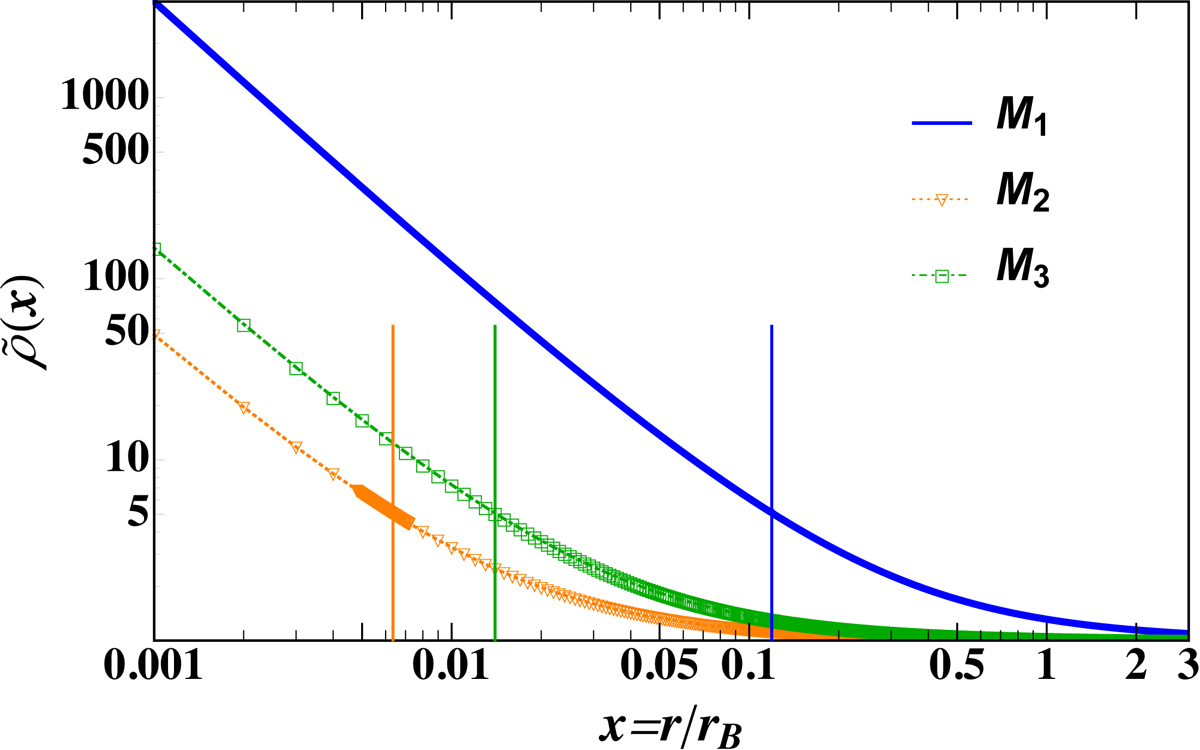Fig. 5.

Density profiles of the radiative non-isothermal models with M(τ) = 0. The vertical lines mark the position of the sonic radius for each model. As the UV emission becomes stronger, the accreting gas becomes supersonic at larger radial distances from the SMBH, while the density becomes higher for x ≲ 0.2. These trends apply only to models M2 and M3, while model M1, having an arbitrary θ0 and weaker UV emission, becomes supersonic at a much larger distance from the SMBH and achieves a much higher central densities than models M2 and M3.
Current usage metrics show cumulative count of Article Views (full-text article views including HTML views, PDF and ePub downloads, according to the available data) and Abstracts Views on Vision4Press platform.
Data correspond to usage on the plateform after 2015. The current usage metrics is available 48-96 hours after online publication and is updated daily on week days.
Initial download of the metrics may take a while.


